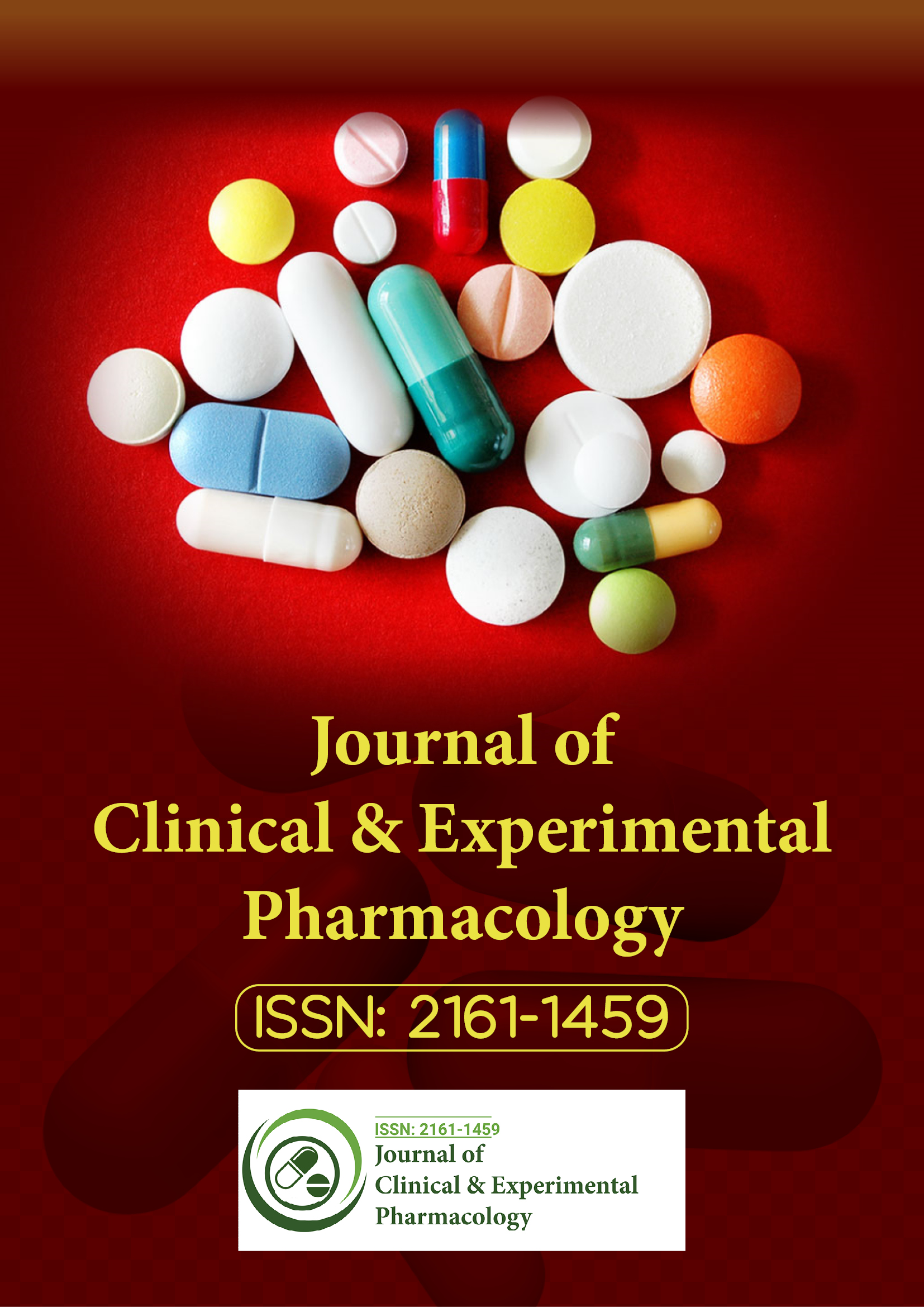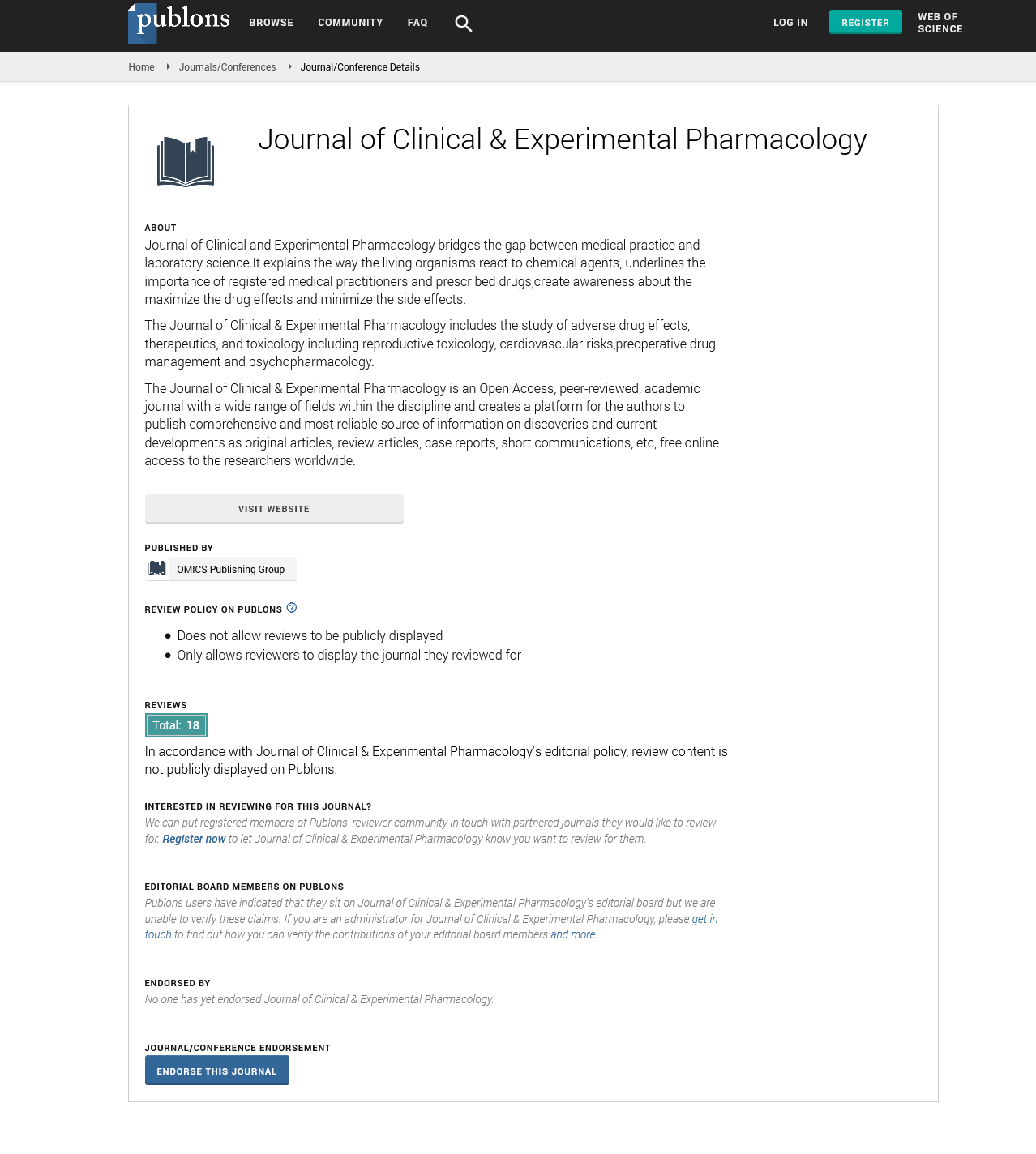Indexed In
- Open J Gate
- Genamics JournalSeek
- China National Knowledge Infrastructure (CNKI)
- Ulrich's Periodicals Directory
- RefSeek
- Hamdard University
- EBSCO A-Z
- OCLC- WorldCat
- Publons
- Google Scholar
Useful Links
Share This Page
Journal Flyer

Open Access Journals
- Agri and Aquaculture
- Biochemistry
- Bioinformatics & Systems Biology
- Business & Management
- Chemistry
- Clinical Sciences
- Engineering
- Food & Nutrition
- General Science
- Genetics & Molecular Biology
- Immunology & Microbiology
- Medical Sciences
- Neuroscience & Psychology
- Nursing & Health Care
- Pharmaceutical Sciences
Opinion Article - (2025) Volume 15, Issue 3
Cardiovascular Drug Development: Trends in Antithrombotic Therapy Research
Omeke Thomas*Received: 06-Jun-2025, Manuscript No. CPECR-25-29372; Editor assigned: 09-Jun-2025, Pre QC No. CPECR-25-29372 (PQ); Reviewed: 23-Jun-2025, QC No. CPECR-25-29372; Revised: 30-Jun-2025, Manuscript No. CPECR-25-29372 (R); Published: 07-Jul-2025, DOI: 10.35248/2161-1459.25.15.488
Description
Cardiovascular disease remains a leading cause of death worldwide, with thrombotic events such as myocardial infarction, ischemic stroke and venous thromboembolism playing a major role in patient outcomes. The development of antithrombotic therapies has evolved significantly over the past several decades, moving from nonspecific anticoagulants and anti-platelets toward more targeted agents with improved safety profiles. Recent research in this area continues to explore novel pathways, molecular targets and formulations designed to enhance efficacy while reducing bleeding risk.
Traditional antithrombotic agents are categorized broadly into antiplatelet drugs and anticoagulants. Antiplatelet agents such as aspirin and clopidogrel inhibit platelet activation and aggregation, which are critical steps in arterial thrombus formation. Aspirin acts through irreversible inhibition of Cyclooxygenase-1 (COX-1), while clopidogrel blocks the P2Y12 receptor. These drugs have become standard therapies for acute coronary syndromes and secondary prevention of cardiovascular events. Dual Antiplatelet Therapy (DAPT), typically combining aspirin and a P2Y12 inhibitor, remains a key component of treatment following Percutaneous Coronary Intervention (PCI).
While effective, traditional antiplatelet agents carry a risk of gastrointestinal bleeding and may have variable responses due to genetic polymorphisms and drug interactions. As a result, newer P2Y12 inhibitors such as prasugrel and ticagrelor have been developed, offering more predictable and potent platelet inhibition. Ticagrelor, a reversible inhibitor, demonstrates faster onset and offset of action compared to clopidogrel, making it suitable for acute settings with flexible dosing needs.
In the realm of anticoagulation, warfarin was long the mainstay for prevention and treatment of thromboembolic events. Its use requires regular monitoring and dose adjustments due to a narrow therapeutic window and interactions with food and drugs. The introduction of Direct Oral Anticoagulants (DOACs) marked a significant advancement in anticoagulation therapy. Drugs like dabigatran (a direct thrombin inhibitor) and factor Xa inhibitors such as rivaroxaban, apixaban and edoxaban have become widely adopted for the prevention of stroke in atrial fibrillation and the treatment of venous thromboembolism.
These newer agents provide fixed dosing, predictable pharmacokinetics and fewer dietary interactions, reducing the need for routine monitoring. They have demonstrated noninferiority or superiority to warfarin in clinical trials, with a lower incidence of intracranial hemorrhage. However, bleeding remains a concern and reversal agents have been developed to counteract the effects of DOACs in emergency situations. Idarucizumab is approved for dabigatran reversal, while andexanet alfa can reverse factor Xa inhibitors.
Emerging research in antithrombotic therapy is focused on targeting upstream mechanisms of thrombosis to achieve efficacy with a lower bleeding risk. One area of investigation involves factor XI and factor XII inhibitors. These coagulation factors play a role in thrombus formation but are considered less essential for normal hemostasis. Agents targeting these pathways, such as antisense oligonucleotides or monoclonal antibodies, are currently in early-phase trials and have shown promise in reducing thrombosis without significantly increasing bleeding.
In addition to coagulation factors, attention has turned to platelet activation pathways beyond the P2Y12 receptor. Agents targeting glycoprotein VI or thrombin receptors on platelets are under development. These alternative pathways could offer complementary inhibition or serve as alternatives in patients who are resistant or intolerant to existing therapies. Some investigational drugs aim to modulate intracellular signaling or metabolic pathways in platelets, representing a more nuanced approach to inhibiting platelet function.
Another trend in antithrombotic research is the development of personalized treatment strategies. Pharmacogenomic testing for polymorphisms in the CYP2C19, which affects the clopidogrel metabolism, can guide drug selection and dosing. Additionally, point-of-care assays to assess platelet function or anticoagulant activity may allow for more individualized therapy, particularly in high-risk or elderly patients. Integration of such tools into clinical decision-making remains an area of ongoing study.
The use of combination therapies is also being refined. While DAPT has been a standard for years, its duration and components are under reconsideration. Shorter durations of DAPT and use of monotherapy strategies are being explored to reduce bleeding in patients at high hemorrhagic risk. Trials such as TWILIGHT and STOPDAPT have provided evidence supporting alternative strategies that maintain antithrombotic efficacy with improved safety outcomes.
Drug delivery innovations have also found application in antithrombotic therapy. Long-acting injectable anticoagulants and implantable drug-eluting devices are under development. These approaches could address issues related to adherence and provide sustained protection in select patient populations. Nanotechnology is being explored to deliver antithrombotic drugs directly to sites of vascular injury, thereby limiting systemic exposure and reducing bleeding risks.
Challenges in antithrombotic therapy development remain. The balance between thrombosis prevention and bleeding remains delicate and patient variability adds complexity to treatment choices. Furthermore, specific populations such as patients with cancer-associated thrombosis or those with mechanical heart valves continue to require tailored strategies. More real-world data are needed to validate the findings from clinical trials and translate them into broad clinical practice.
In conclusion, cardiovascular drug development in the field of antithrombotic therapy has seen considerable progress through the introduction of targeted agents, improved formulations and individualized treatment approaches. While bleeding remains a major limitation, newer therapies and delivery strategies aim to refine the balance between safety and efficacy. As research continues to explore novel pathways and combination regimens, the field is moving toward safer and more effective management of thrombotic disorders in diverse patient populations. Continued innovation, supported by clinical trials and real-world evidence, will be essential in shaping the future of antithrombotic care.
Citation: Thomas O (2025). Cardiovascular Drug Development: Trends in Antithrombotic Therapy Research. J Clin Exp Pharmacol. 15:488.
Copyright: © 2025 Thomas O. This is an open-access article distributed under the terms of the Creative Commons Attribution License, which permits unrestricted use, distribution and reproduction in any medium, provided the original author and source are credited.

